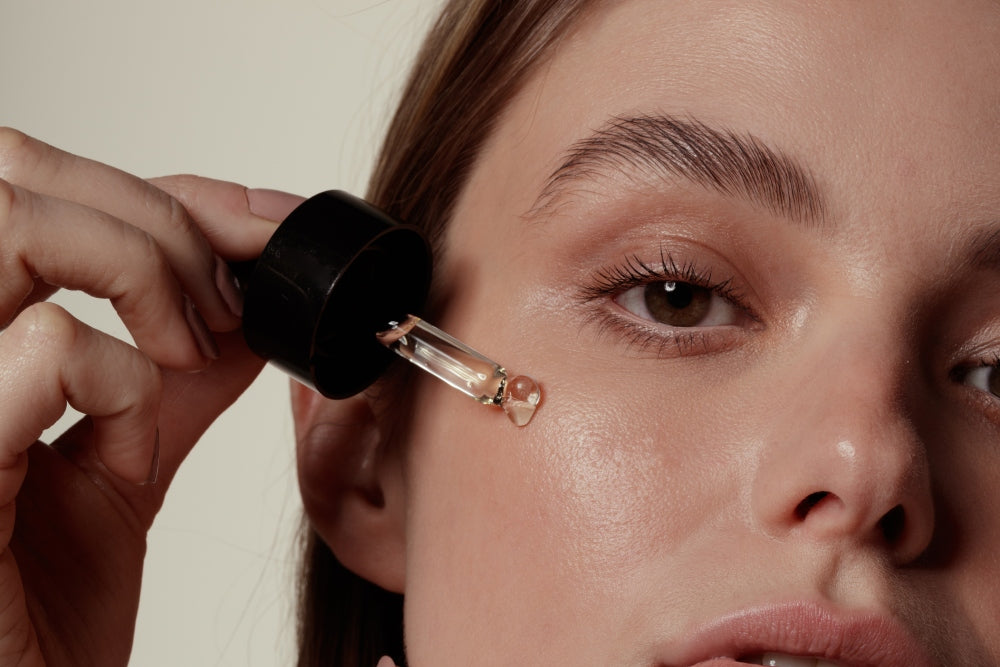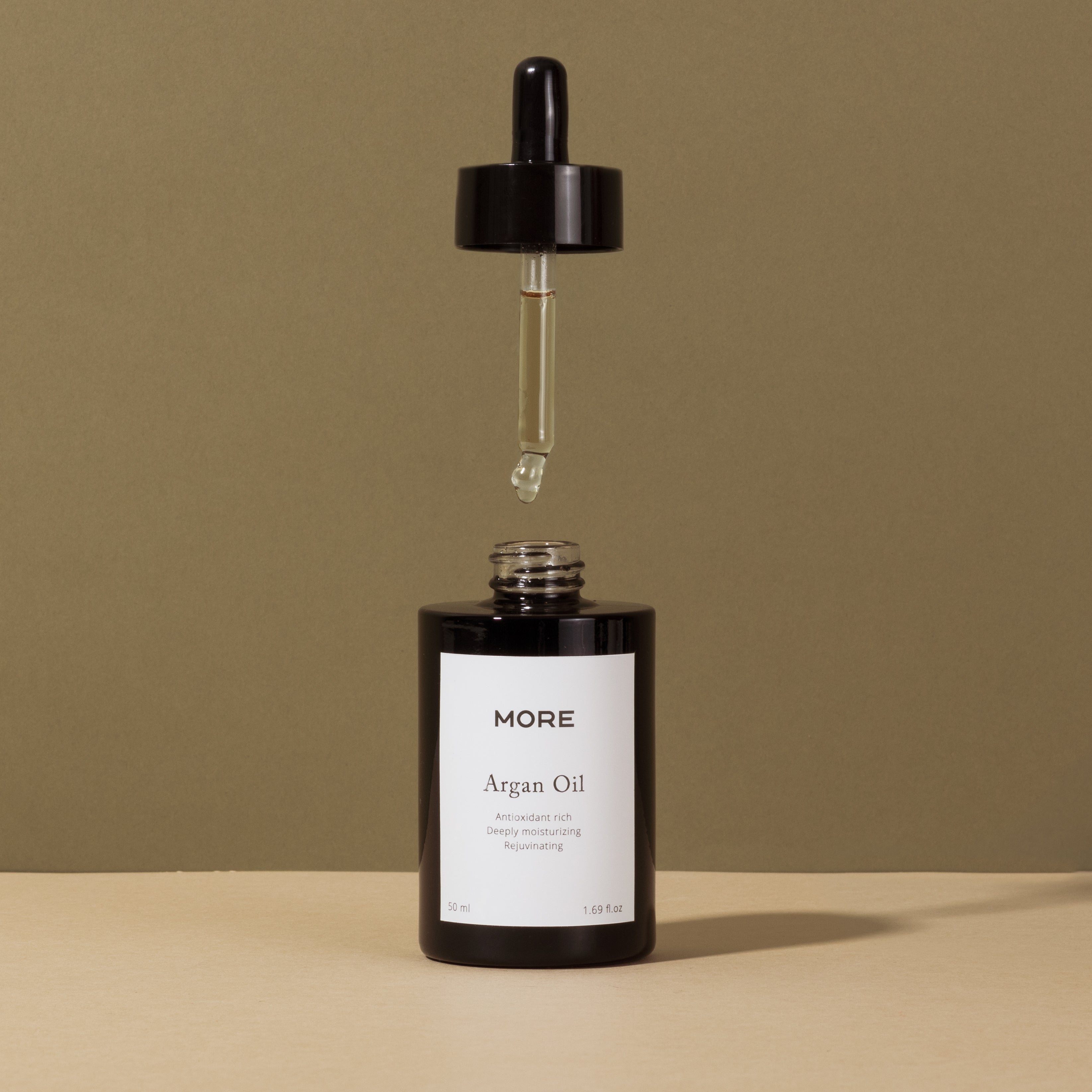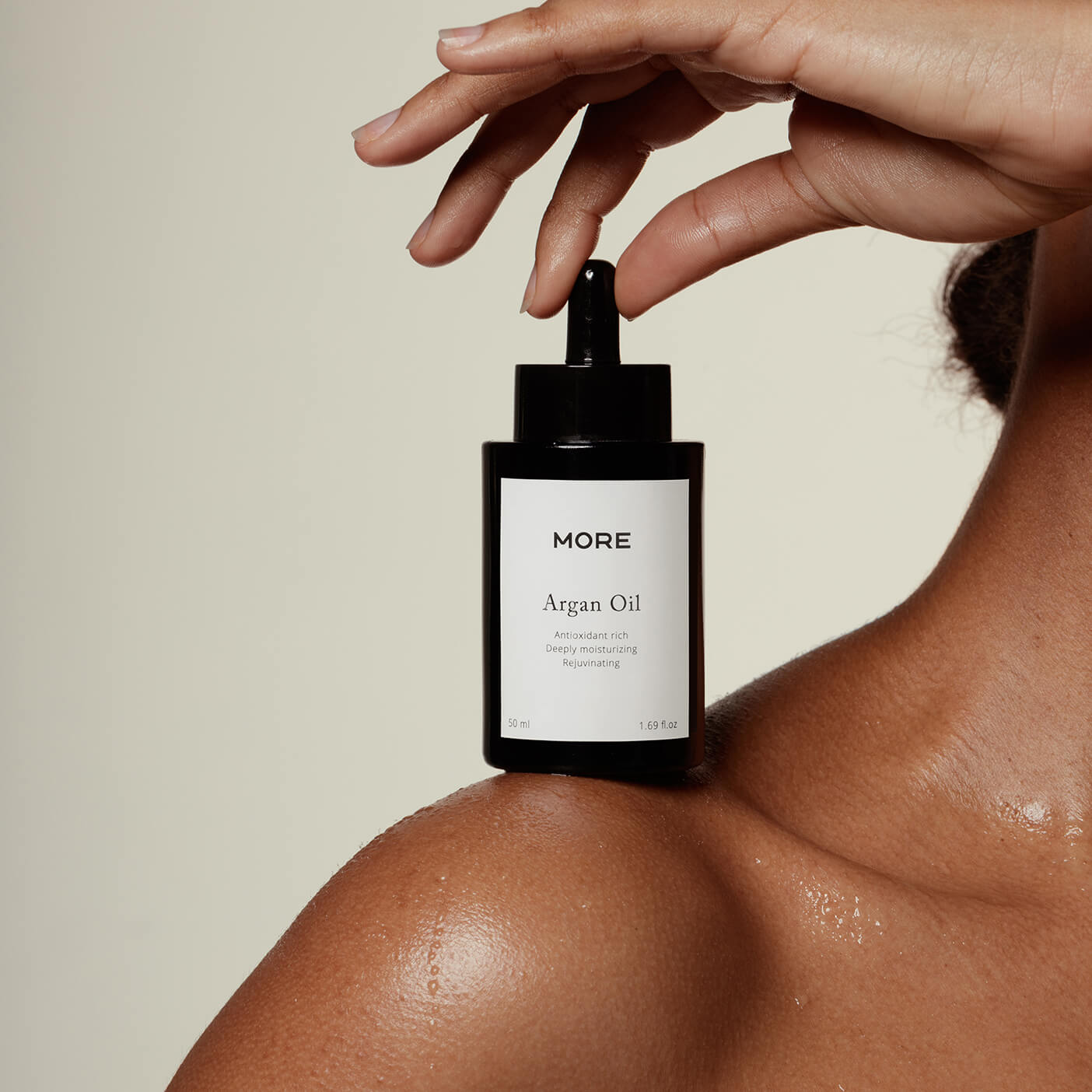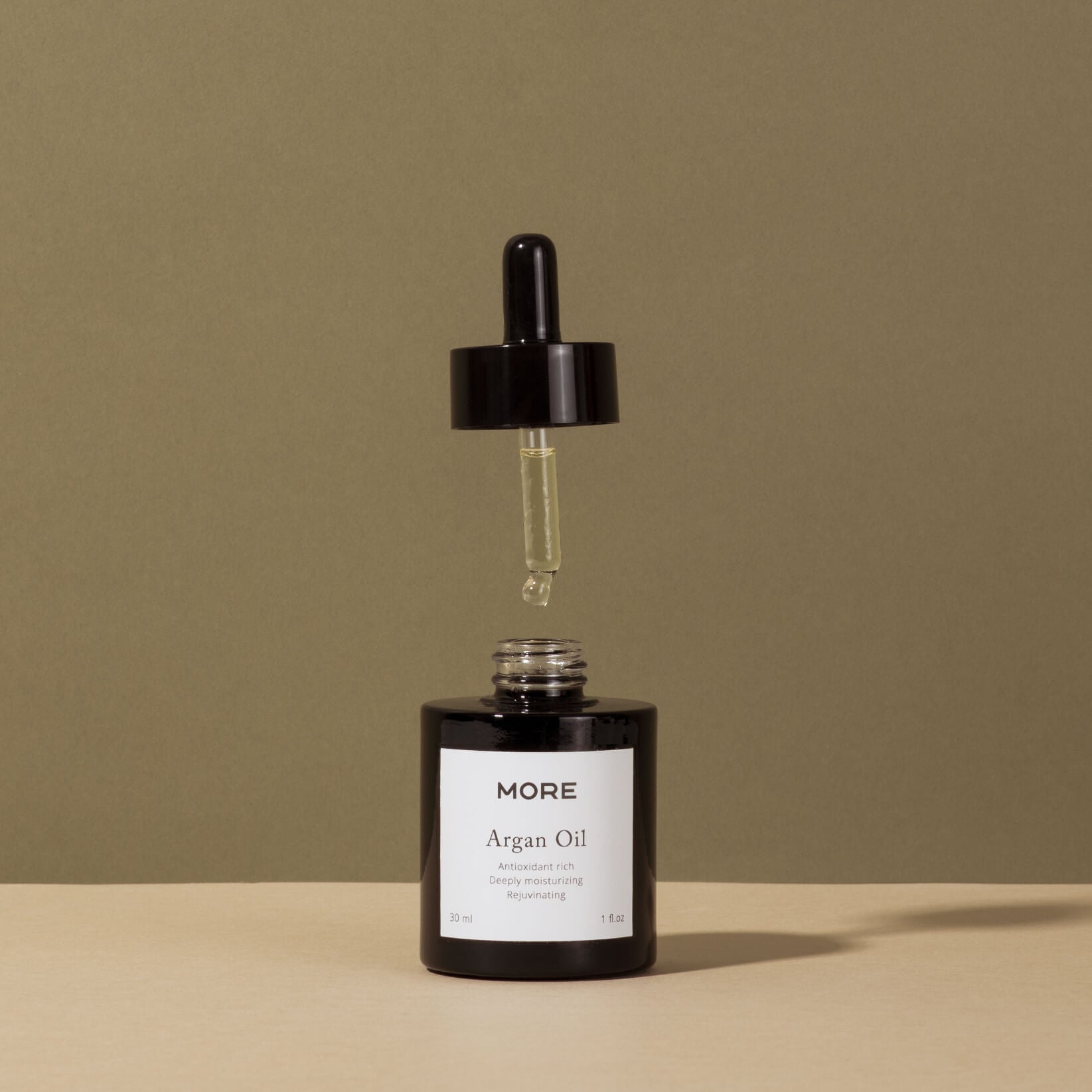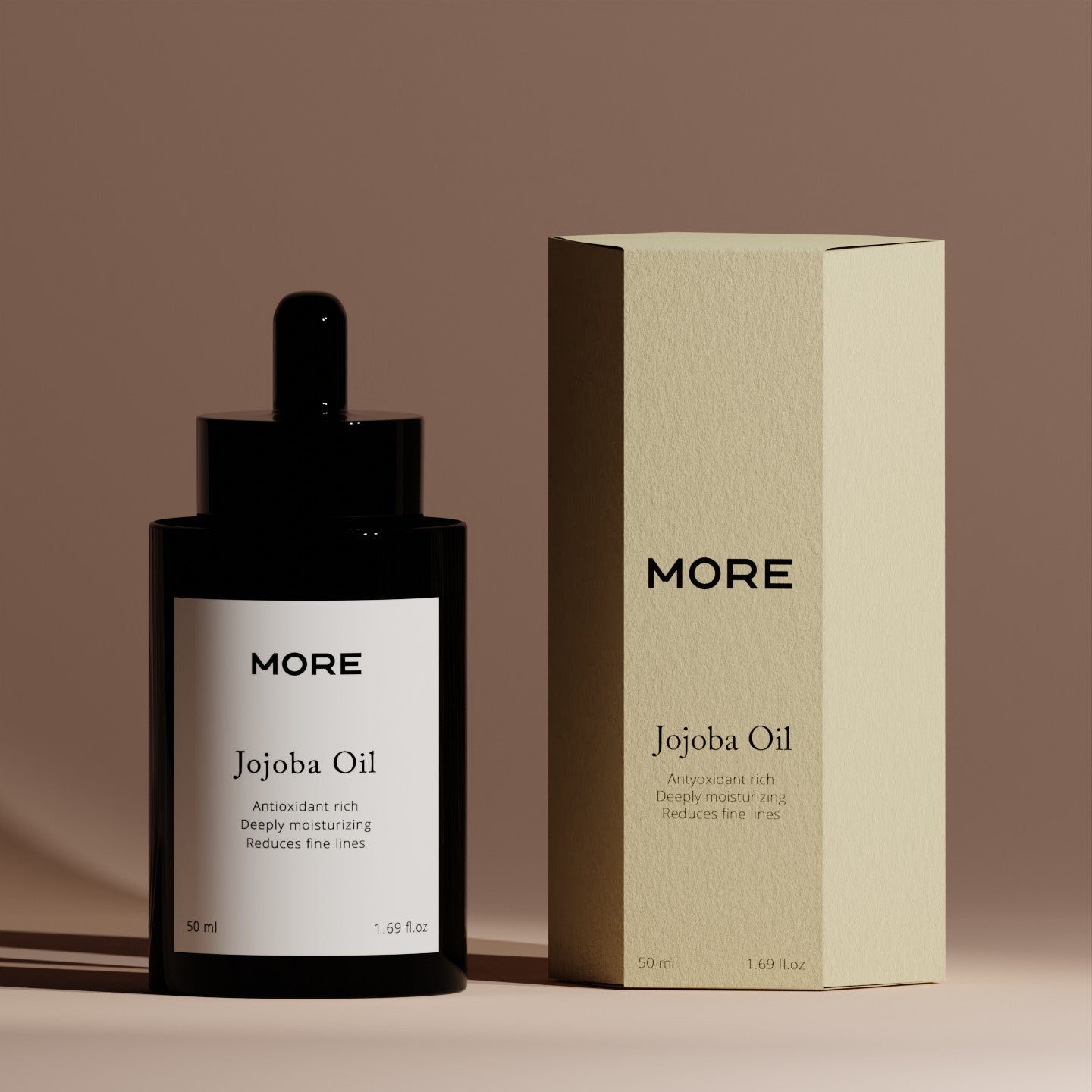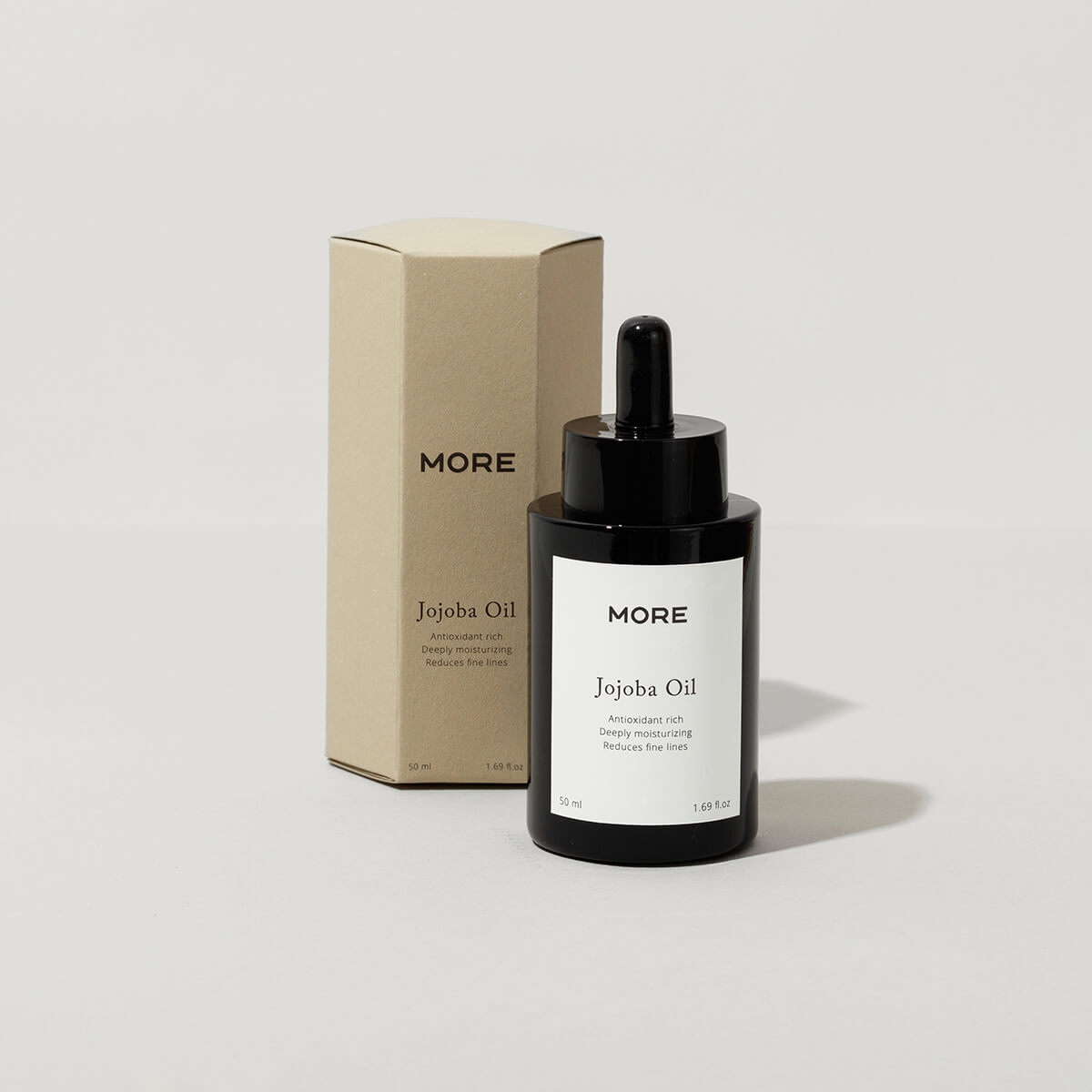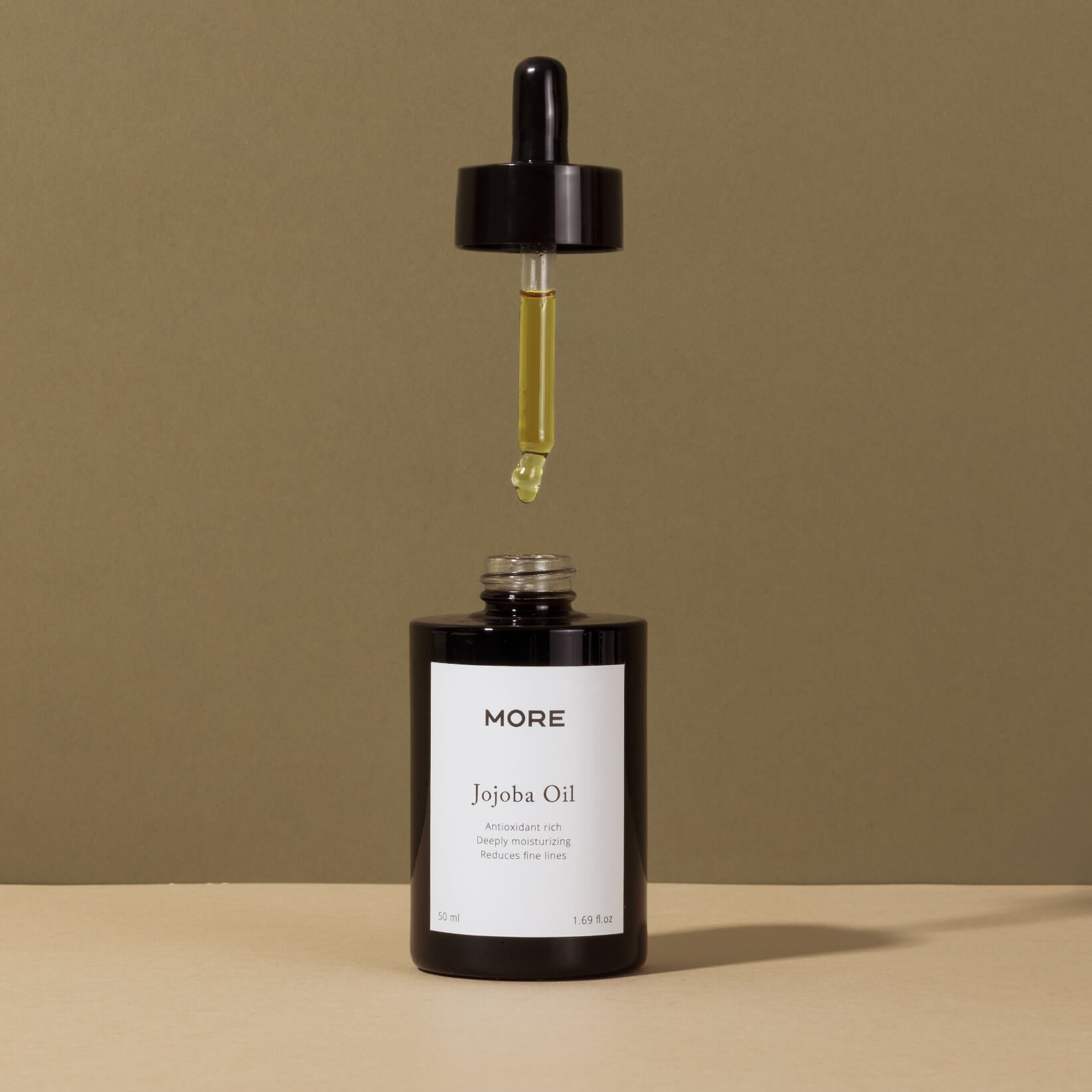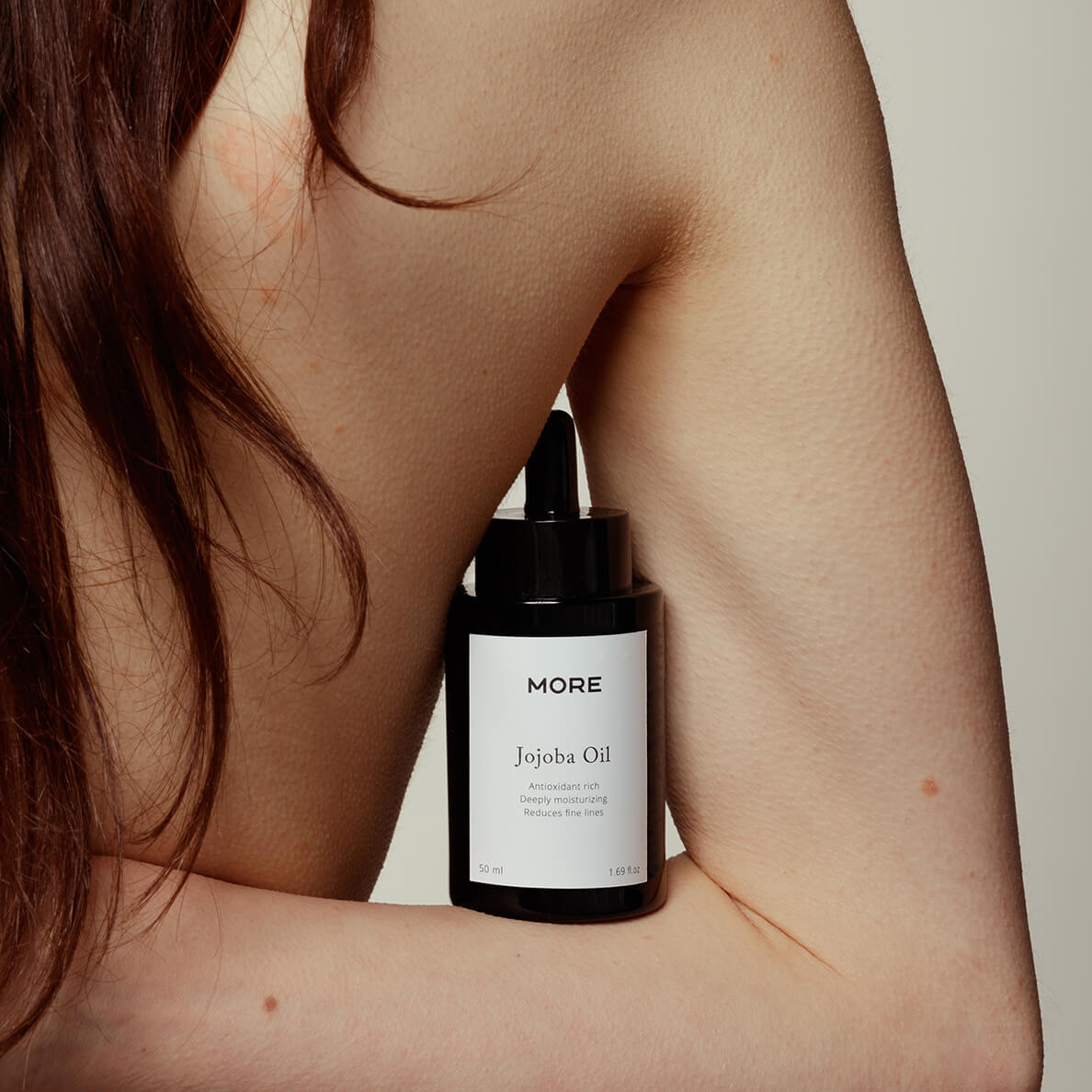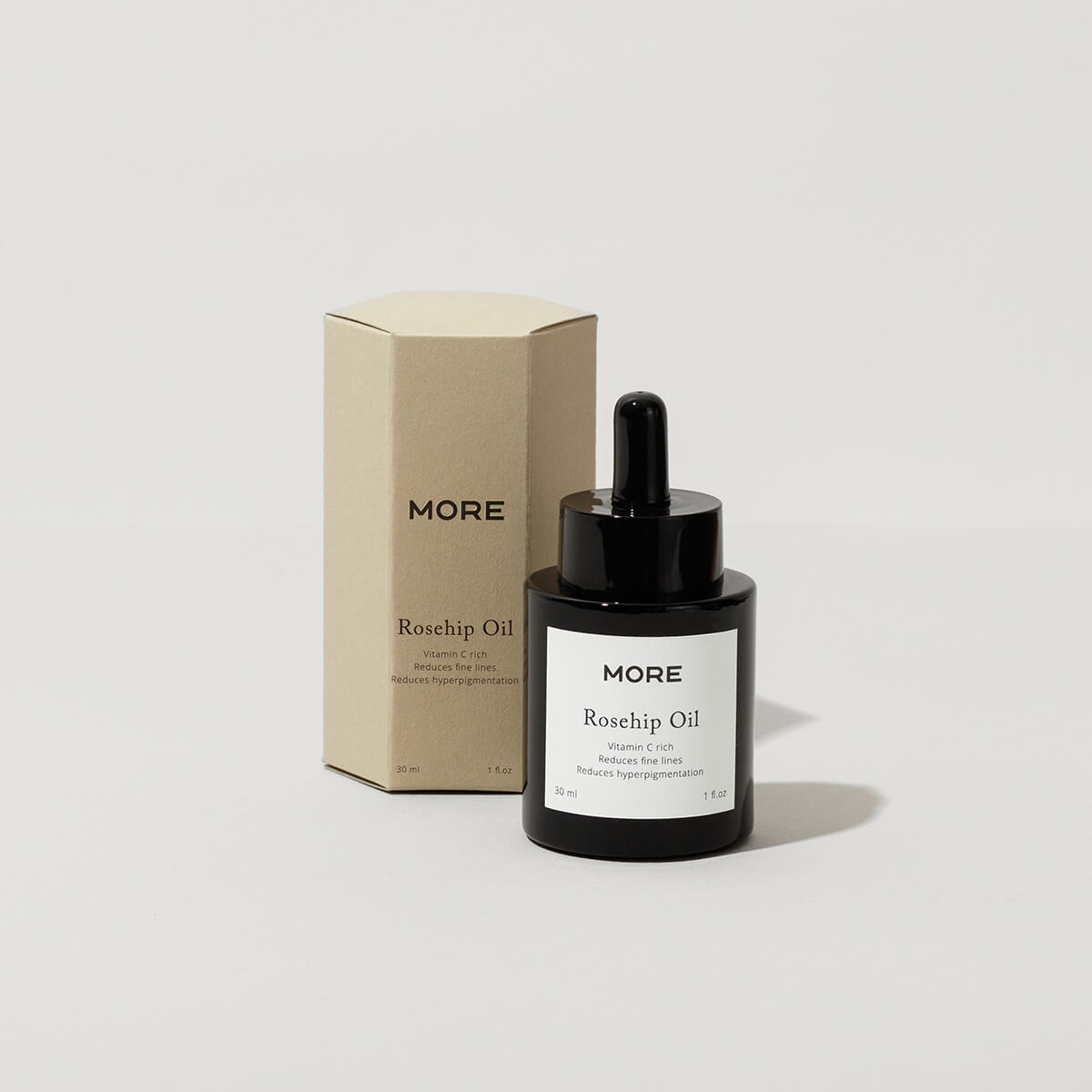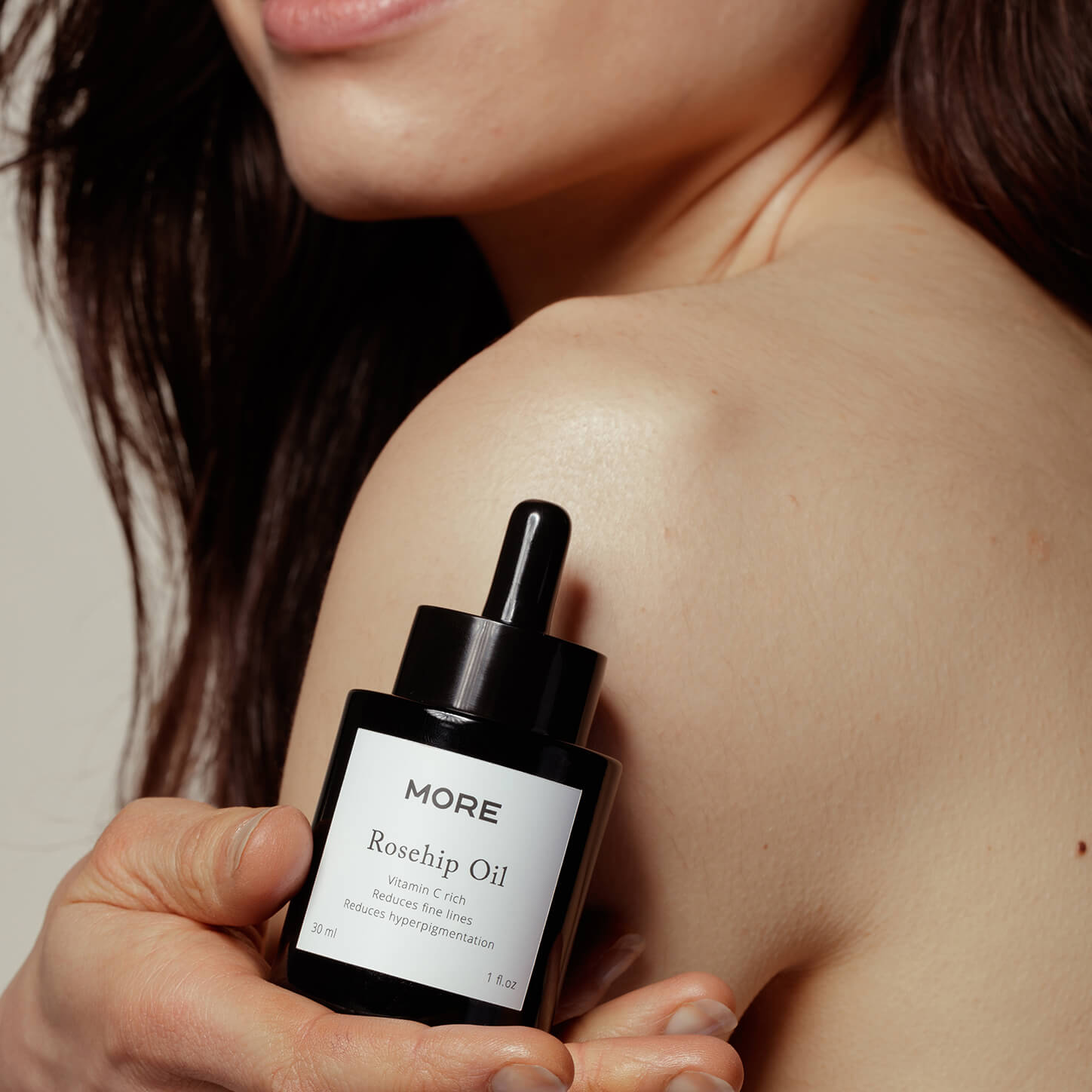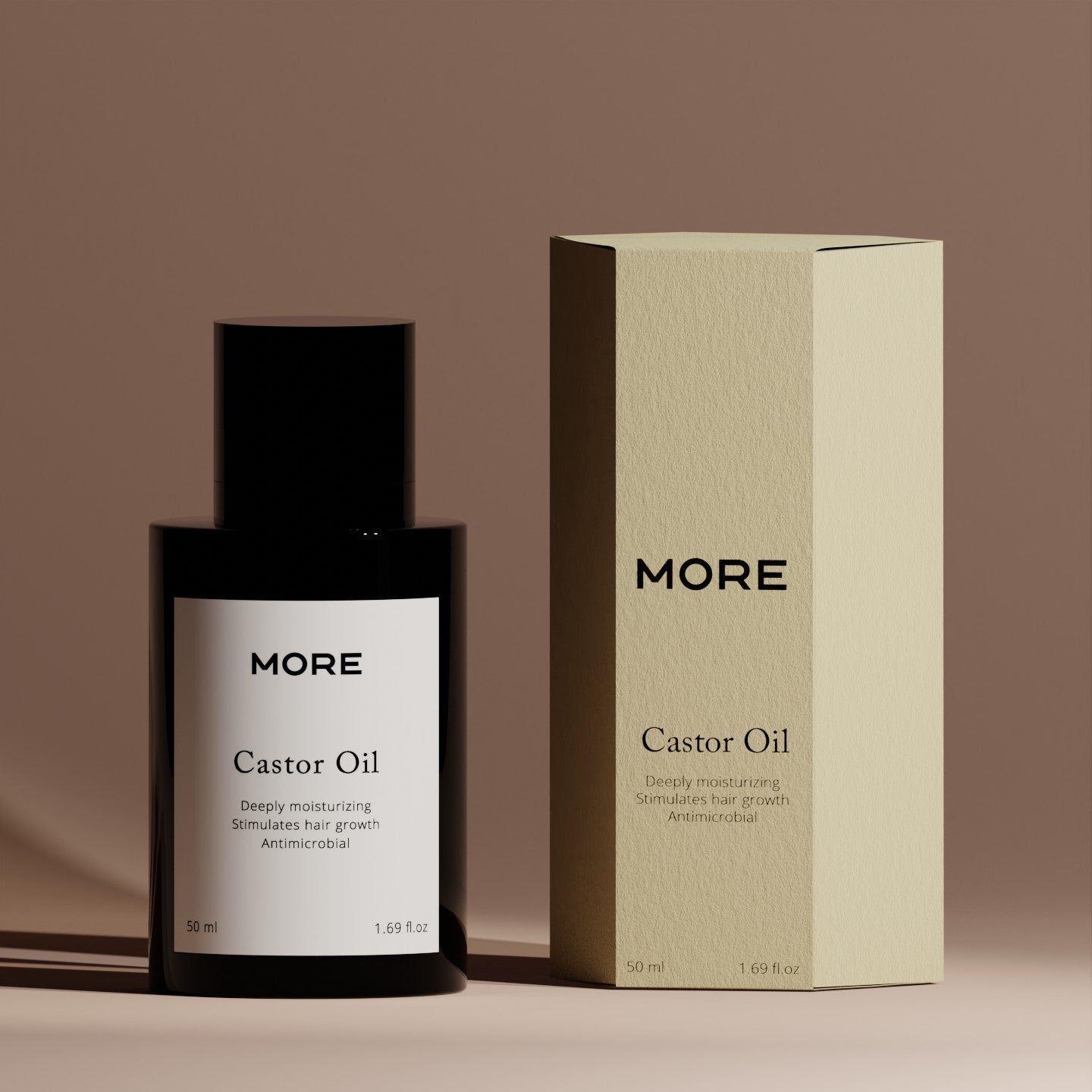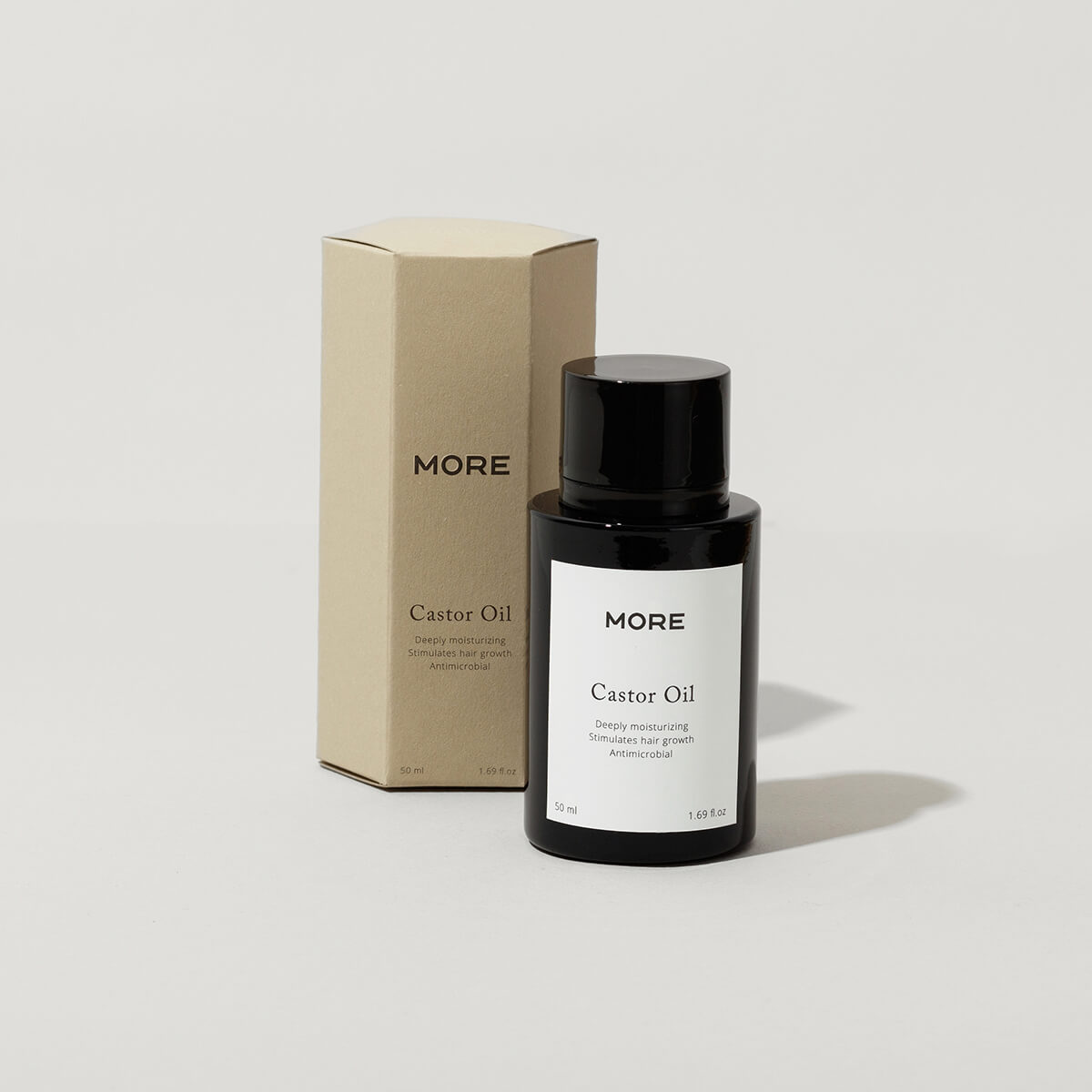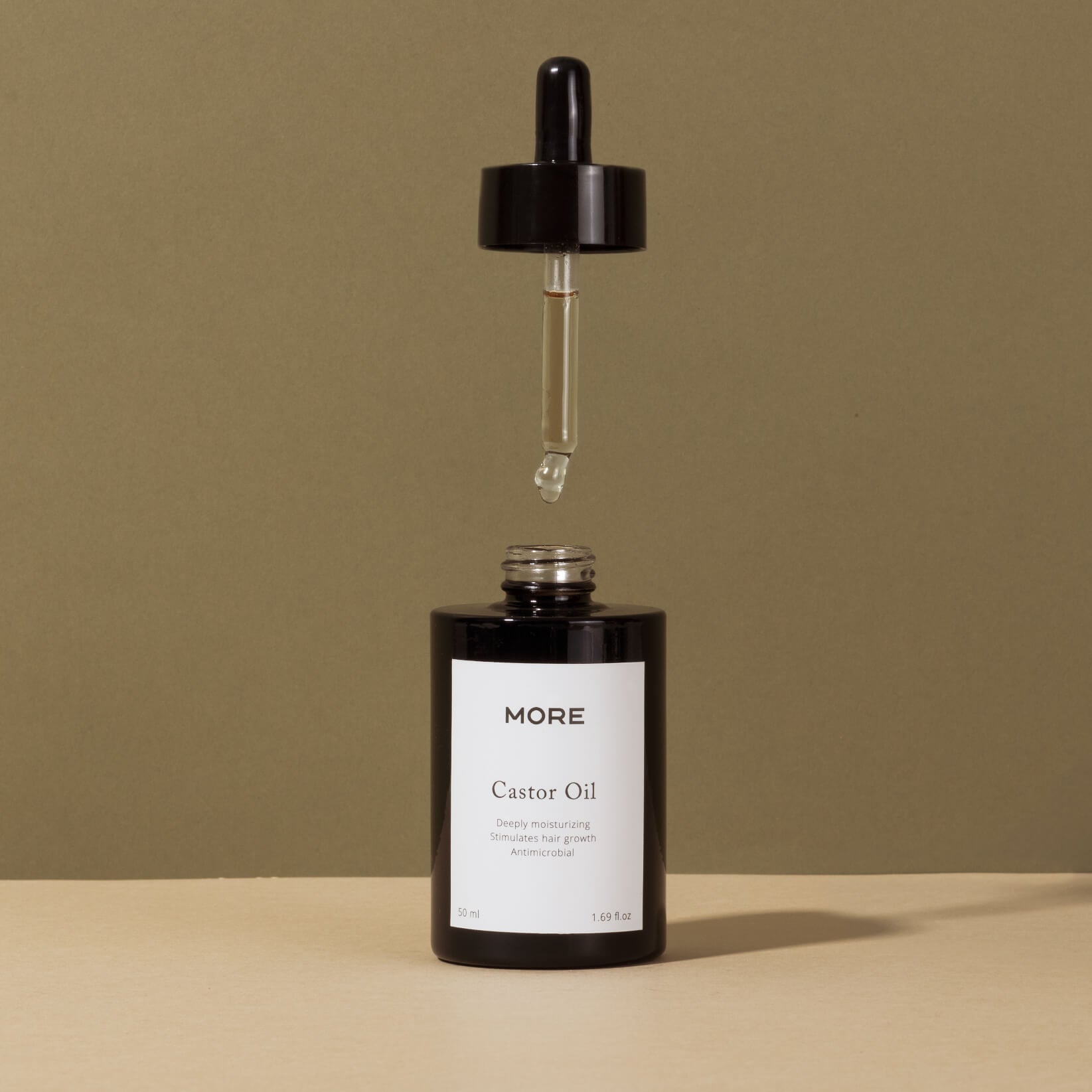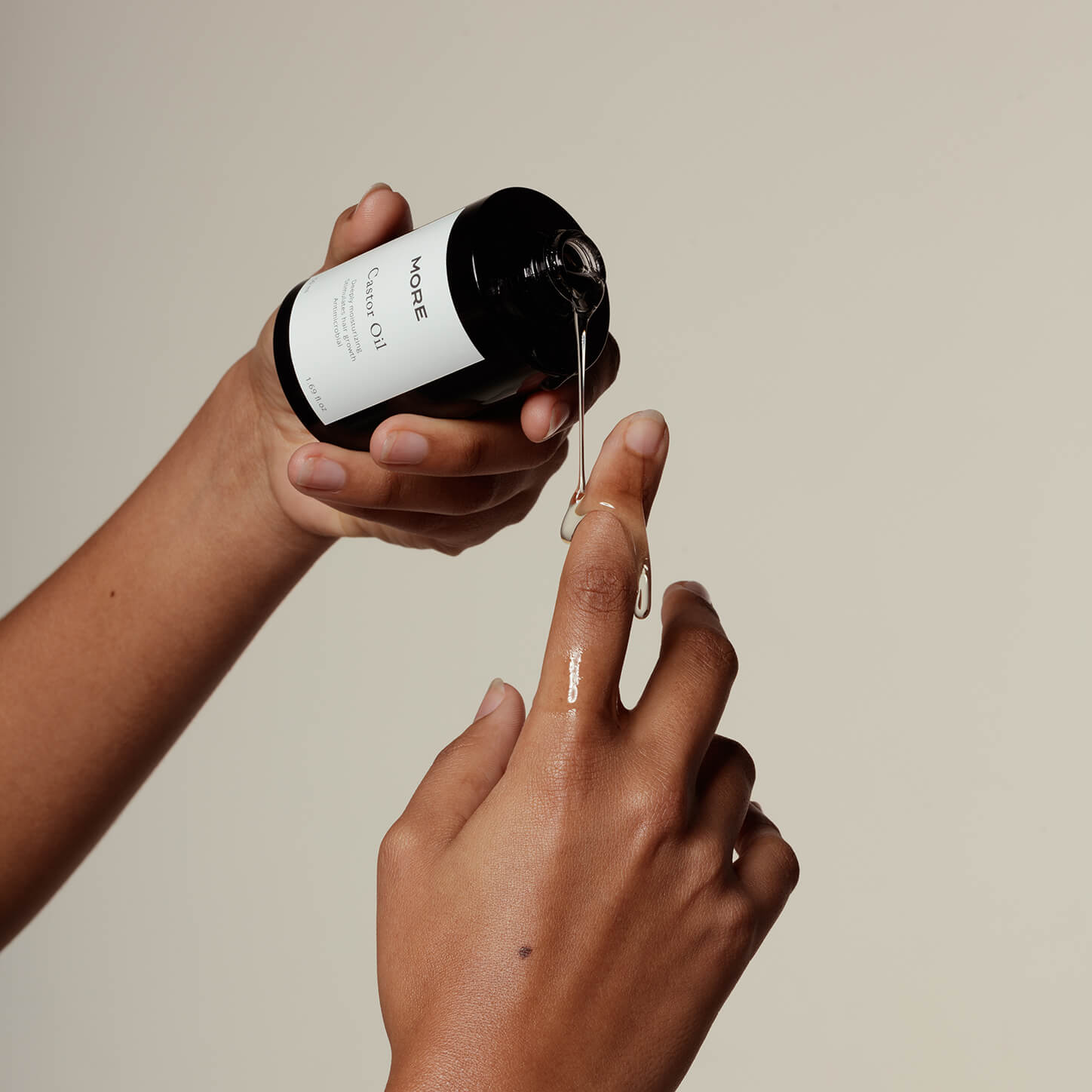Which oil suits my skin?
Our skin – the outside of our body – is our largest organ. It protects us against external influences. It keeps us warm. And is an important link in detoxifying our body. All the more reason to take good care of it.
The skin consists of three layers: the epidermis, the dermis and subcutaneous tissue. The outer layer, the epidermis, is the layer that we have the most influence on from the outside. The epidermis is composed of the stratum corneum, acid mantle and microbiome. The condition of these three together determines whether your skin is in good condition or not.
Skin types
Every person is unique. This also applies to every skin. The skin is a living organ. This means that it can change under the influence of the weather, stress and many other causes. It may well be that your skin responds better to other products in the summer than in the winter.
To help you choose products, we at More have divided them into a number of different skin types. Skin can be oily, dry, sensitive, combination, normal or mature. Specific properties apply to each skin type. While one skin benefits more from a greasy product, another skin needs more moisturizing products. Every skin is different. With the right care it is possible to keep the skin healthy and vital for as long as possible.
Oily skin
You can recognize oily skin by the shiny layer on the skin. This type of skin is often accompanied by pimples and larger pores and produces a lot of sebum. This makes the skin shine faster. And pores can become clogged. This can cause pimples to develop again. A drying oil works very well for this skin type. This allows you to nourish the skin without the oil leaving a greasy layer.
Read more
Dry skin
You can recognize dry skin by the dry feeling it causes. This type of skin produces little sebum and is dehydrated. Non drying oils are best used for dry skin. The oil keeps the skin supple and in good condition.
Sensitive skin
Sensitive skin reacts quickly to external influences. Think of heat, cold, drought, high humidity, the sun. This can cause the skin to become red. The skin feels tight and therefore itches quickly. An oil can help make and keep the skin resilient. It is important to check whether your skin responds well to the oil. Sensitive skins can also respond to all-natural products.
Combination skin
A combination skin is, as the words already indicate, 'mixed' in terms of type. The skin is partly oily and partly dry. The dry spots are often on the cheeks. The oily spots are often found on the T-zone: the forehead, nose and chin. Semi-drying oils are very nice for people with this skin type.
Normal skin
Does your skin look fresh? And is your skin neither too dry nor too oily? Then you have normal skin. This type of skin is well balanced. An oil can also be used in the case of this skin type. Jojoba oil has a lot of vitamin E and is therefore ideal as an everyday oil.
Mature skin
Aging is something we quickly see in the condition of the skin. As we age, the elasticity of the skin decreases. This results in sagging skin. The skin may also become duller and pigment spots may appear. With the right skin care you can slow down this process. You can use rosehip oil to prevent and/or partly remedy sagging skin. This oil promotes the elasticity of the skin.
Oil types
Putting oil on the face is often seen as a big no-no. It would be too greasy and cause pimples. This is not entirely correct. Here too, it depends on the skin type which oil works well for the skin.
At More we only sell vegetable oils. These oils are natural and ideal for nourishing the skin. It is important to know that not every oil is the same. Just like skins, oils all have their own qualities and properties. We can talk about drying, semi-drying and non-drying oils.
Drying oil
This type of oil feels dry on the skin. This means that the oil does not feel greasy on the skin. This is a nice oil for oily skin.
Semi-drying oil
Semi-drying oils are ideally suited for combination skin. This type of oil suits both dry and oily areas that combination skin has.
Non-drying oil
Dry skins benefit most from a non-drying oil. A non-drying oil helps to maintain the skin's moisture balance. This way the skin remains healthy and elastic.
Using the oil
You can use the oil to rub your body and face. Natural products can also cause an allergic reaction. Therefore, before using the oil, do a patch test by rubbing a little oil in your elbow or behind your ear. Discover how your skin reacts to the oil.
You can apply the oil to dry skin, but also to towel-dried skin. In that case, the skin is still slightly moist. When you apply oil to it, you lock in the moisture on your skin with the oil. This way, the moisture balance is maintained and the oil gives you well-nourished skin.
If you use make-up you can also remove it with oil. To do this, moisten a reusable cotton pad and apply a little oil to it. Apply the disc over your make-up as you normally would. You can even remove waterproof make-up this way easily and without the use of chemicals.



